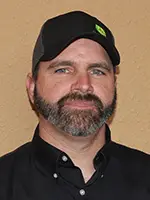
Preseason planter maintenance with Don Seltzner, Mid-State Equipment
 Once spring comes around and the weather gets warmer, farmers get anxious to get the planter out and hit the fields. Before you start putting seed in the ground, give your planter a proper preseason check. Don Seltzner, Mid-State Equipment, provided the following areas on a planter that should be checked before you head out to the fields.
Once spring comes around and the weather gets warmer, farmers get anxious to get the planter out and hit the fields. Before you start putting seed in the ground, give your planter a proper preseason check. Don Seltzner, Mid-State Equipment, provided the following areas on a planter that should be checked before you head out to the fields.
Chains, tires and bearings
One of the first things Seltzner said to check is if chains are lubricated and at the proper tension. He said they should not be stretched and should run smoothly to avoid skipping and throwing off seed placement. Replace any worn or stiff chains.
One commonly overlooked item is tire inflation, Seltzner said. Proper inflation ensures the ground drive transmission turns at the correct speed and plants the desired population, desired fertilizer rate, and it can also affect the planter frame height.
Check all ball bearings to make sure anything that should turn is turning smoothly.
Row unit
Seltzner said you should start your inspection of the row unit by giving it a side-to-side shake to check for movement. If there is excessive movement, bushings will need to be replaced. Other areas on the row unit he said you should check include:
- Opener blades: These should have a 15-inch radius, and they should be replaced if they are worn down to 14 inches across. Seltzner also said you should perform the “business card” test to inspect where the opener blades come in contact with one another. Slide one business card from the top of the gap and another from the bottom until they can’t go any further. The distance between the two cards should be between 1.5 to 2.5 inches.
- Row cleaners: Row cleaners are important for residue management. Having good row cleaners is important to influence uniform emergence of the seed. Minimizing residue in the fields and achieving good seed-to-soil contact can improve uniform emergence and gain a 5- to 9-percent increase in potential yield.
- Closing wheels: Make sure the closing wheels are aligned over the center of the seed furrow. Seltzner said you can check this with the “scratch test.” Drag the planter on the ground and make sure the closing wheels cross over it and are centered. You should also check for any side-to-side movement of the unit and replace bushings, if necessary.
Downforce
Seltzner said it is important to check the downforce because it creates the seed trench. If you have pneumatic downforce, he said you should check for leaks with soapy water. If you have spring downforce, check and replace any broken hardware or latches.
He also emphasized you need to know the correct downforce for the soil you’re working on. Too much and you can increase wear on equipment and cause compaction of the seed trench sidewall, resulting in poor root growth. Too little and you’ll get poor ground contact, loose soil, and poor seed depth, leading to uneven emergence and poor yield.
Frame height
Lastly, Seltzner said you should check the frame height once in the field. It should be 21 inches from the ground to the planter frame and, when the planter is engaged in the ground, the drawbar should be level from front to back.
While these are some of the more common areas to check in preseason maintenance, Seltzner said any area where movement occurs or soil contacts will have wear and these areas should be checked too.
Planting season is an exciting time, but it’s important to take the time to inspect the planter beforehand and make sure everything is where it needs to be to prevent major problems when planting time comes.
If you are looking to perform a preseason check on your harvester, you can click here to read what areas you should check before harvest comes around.
| Category: |
Equipment Forage Foundations |

